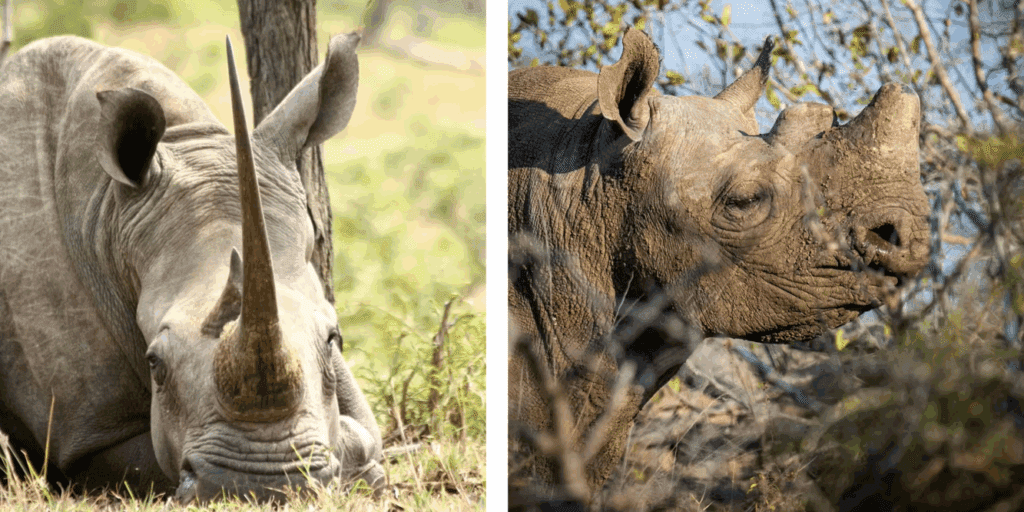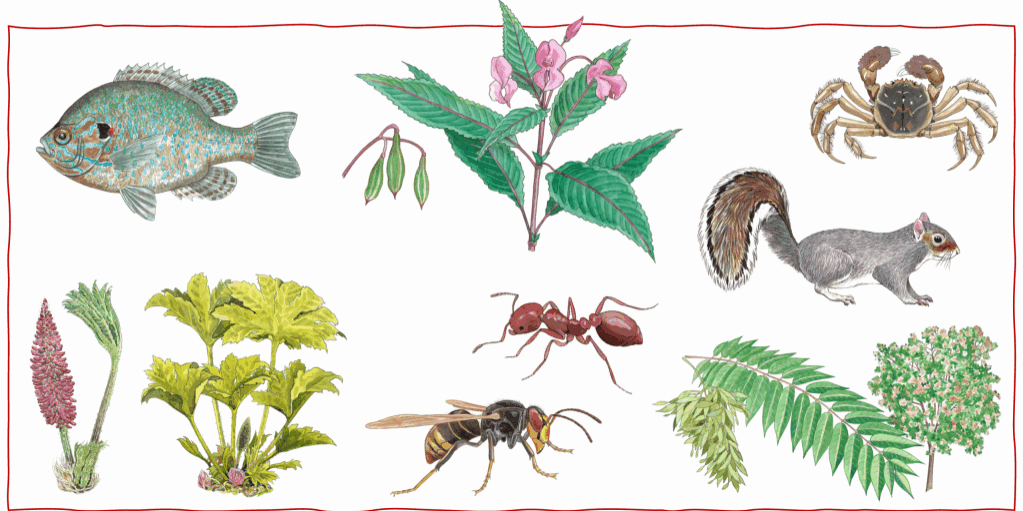Future infrastructure expansion poses severe biodiversity risks and requires effective, evidence-based and transparent mitigation strategies
This blog was written by Tom White, Postdoctoral Researcher in the Interdisciplinary Centre for Conservation Science, University of Oxford and Consultant with The Biodiversity Consultancy
& Ashley Simkins, Science Officer at BirdLife International and PhD student in the Conservation Science Group, Department of Zoology, University of Cambridge

Global biodiversity is under serious threat. One million species have been estimated to be facing extinction [1], and monitored species populations have declined by 69% on average between 1970 and 2018 [2]. Land use change and overexploitation are two of the largest threats to biodiversity. Infrastructure development and expansion is a significant driver of land use change, including for new housing, roads, railways, power lines, dams, mines, oil and gas and renewable energy facilities; it threatens almost half (46%) of known threatened species with documented threats [3].
Physical infrastructure obviously has a direct impact on the habitat where it is found due to its sizeable land footprint (both converting and degrading habitat), but it can also influence biodiversity by breaking up habitats and populations, disturbing species including through increased human-wildlife interactions or generation of excessive noise, light or chemical pollutants. There can also be indirect effects as the construction of new infrastructure opens up access of wild spaces to other people. This can lead to cascading effects such as increased land use change or overexploitation in these previously inaccessible areas. These impacts will differ by infrastructure type and size, and the species and habitats present.
Let’s take the example of wind turbines. Although the physical land footprint may be low, depending on their placement, there can be a high risk for collisions with susceptible bird and bat species [4]. Not only that, but they also have many indirect impacts; associated access roads and power lines may further fragment the habitat, and the increased accessibility may facilitate further development and expansion of infrastructure, and increased exploitation through hunting and logging [5]. One study [6] found that around 150,000 birds are killed by wind turbines in the United States each year, with on average 2.3 birds and 3.4 bats killed per turbine per year.

Despite these impacts, global infrastructure continues to expand. For example, globally the combined length of roads and railways are expected to increase by 60% (on 2010 levels) by 2050 [7]. Of course, some infrastructure expansion is necessary in many places. Infrastructure provides essential materials and services (including transport, electricity/energy and healthcare). However, by not properly accounting for the biodiversity impacts of developments, we risk further biodiversity decline as a result of this growth.
Infrastructure in Key Biodiversity Areas
A recent analysis [8] looked at infrastructure development in areas of the world identified as the most important for conserving biodiversity. These sites are known as Key Biodiversity Areas [9]. They capture a range of important aspects of biodiversity, including threatened and geographically restricted species and ecosystems, wilderness areas, areas of importance for key life stages of species (such as migration or spawning) and areas that are assessed as irreplaceable due to the biodiversity they hold.
KBAs on land were overlaid with mapped information on global infrastructure (from WWF’s global intelligence platform, WWF SIGHT). At least 4 out of 5 KBAs already contain a type of human infrastructure, with roads found in the majority of KBAs (approximately 3 out of 4), and power lines and urban areas present in just over 1 in 3 KBAs (37%). This is concerning given the potential impacts of this infrastructure on biodiversity, where some of the most highly threatened and geographically restricted species may be very vulnerable to even small increases in threatening processes.
The study also showed a high risk of future infrastructure developments in these areas, with more than a third of KBAs (35%) containing either mining claims, oil and gas concessions, or plans for oil and gas facilities or powerplants. Though not all of these will be developed, data was unavailable for many forms of infrastructure including the most prevalent currently; roads, powerlines and urban areas. Therefore, this may underestimate the true extent of infrastructure expansion in the future. We therefore risk further degrading these habitats which are some of the most important globally for protecting remaining biodiversity.
Let’s look at a particular KBA with infrastructure. Reserva Nacional Las Chinchillas in Chile is both a KBA and a protected area. This site holds about half of the entire known wild population of one of two species of chinchilla, the Endangered long-tailed chinchilla*, Chinchilla lanigera, from which the increasingly popular pet chinchilla is thought to be descended. Populations within the site are declining. One of the main threats to long-tailed chinchillas is mining near colonies, and our analyses indicate that there are mining claims in the site. There are also roads and powerlines present, which can facilitate further mining. This confirms current and future threats from infrastructure to this species, even within a protected area (established in part for its conservation).

However, though it is often the case, the impact of infrastructure isn’t always negative on biodiversity. For example, power line corridors can provide important nesting structures for some birds, and important strips of grassland/shrubland habitat underneath the lines when developed in highly degraded landscapes. Increased monitoring of biodiversity is essential to better understand which, when and how infrastructure impacts biodiversity, and how best to remove or mitigate the negative impacts of infrastructure on biodiversity.
Managing the infrastructure-biodiversity trade-off
So how do we navigate this trade-off between the need for some infrastructure, and the potential negative biodiversity impacts associated with that development which are often not accounted for? In the study mentioned above [8], Ashley and colleagues recommend a few key steps. Stronger policies, and more effective application and wider adoption of biodiversity safeguards, are necessary to limit negative impacts of infrastructure development. Biodiversity (including KBAs) must be incorporated into the earliest stages of planning process (at all scales), including strict adherence to the mitigation hierarchy ideally avoiding or at least minimising impact on biodiversity. Such action should be delivered as part of specific strategies for managing biodiversity impacts, and targets for delivering biodiversity gains (e.g. Nature Positive, Net Gain, No Net Loss).
However, how do we ensure that these strategies actually deliver for nature? This raises the need for effective mitigation of impacts, something which has all too often not been demonstrated from infrastructure projects. One way of helping to achieve this is by ensuring that action, when taken, is based on evidence. Using evidence can help increase the likelihood of successful outcomes being achieved, highlight gaps in logic, and reduce the risks to businesses associated with ineffective outcomes.

A recent paper [10] outlines a set of principles to help ensure that biodiversity strategies are based on the best available evidence.
- Firstly, evidence-use should become embedded in biodiversity management operations, with regular due-diligence checks to ensure that actions taken have a solid evidence base underlying them.
- Secondly, evidence for potential negative impacts and the effects, costs and viability of potential biodiversity mitigation actions should be collated and appraised to help guide decision making. There are a range of tools available that can help do this. For example, the Integrated Biodiversity Assessment Tool (IBAT) allows businesses to screen potential development sites to identify high risk areas within, or surrounding proposed development areas. This includes protected areas, Key Biodiversity Areas and the threatened species that are potentially present at a site. Conservation Evidence provides evidence for the effectiveness of many actions to minimize impacts and restore biodiversity.
- Thirdly, organizations should implement structured processes for using this evidence in decision making to ensure action is guided by the evidence compiled.
- Fourthly, organisations should be transparent about their impacts, actions taken and the rationale used for taking and/or not taking specific actions. Being transparent can help businesses show how targets are being met, and allow other parties to understand the actions taken and why decisions were made.
- This should then be combined with appropriate monitoring of actions, particularly where there is uncertainty about potential effects, and progress towards biodiversity targets regularly reviewed.
- Lastly, they recommend that businesses also share data collected on baseline and impacts to avoid duplication of effort, and where there are evidence gaps, help build the evidence base by trialling and testing interventions they implement using science-based designs.
The expansion of infrastructure globally also draws into question the need for future infrastructure, and the importance of avoidance as the earliest and most effective type of mitigation. Clearly some infrastructure will be needed in many countries, but research has been highlighting that avoidance is often poorly considered, and there are structural barriers within our economic system that can prevent avoidance of environmental impacts being implemented. For example, a recent paper outlines how political and economic factors drive us towards policies of continued house building, despite the large associated environmental impacts [11]. Further research into these trade-offs and structural drivers is needed, and increased questioning of the need for future infrastructure – particularly in locations with already high material stocks.
Infrastructure development can have important benefits, but also poses risks to biodiversity. If infrastructure is developed in the wrong places and if potential impacts on nature are not effectively combatted, we risk further degrading habitats and species, even in those areas most important for nature globally. This requires properly thinking through the need for new infrastructure, avoiding impacts where possible, and ensuring that mitigation strategies are evidence-based and more likely to be effective.
* Note the long-tailed chinchilla is not currently listed as a KBA trigger species for this site, but the species surpasses KBA criteria thresholds and so does meet KBA criteria
References
[1] Díaz S., Settele J., Brondízio E.S., Ngo H.T., Agard J., Arneth A., Balvanera P., Brauman K.A., Butchart S.H.M., Chan K.M.A., Garibaldi L.A., Ichii K., Liu J., Subramanian S.M., Midgley G.F., Miloslavich P., Molnár Z., Obura D., Pfaff A., Polasky S., Purvis A., Razzaque J., Reyers B., Chowdhury R.R., Shin Y.-J., Visseren-Hamakers I., Willis K.J. & Zayas C.N. (2019). Pervasive human-driven decline of life on Earth points to the need for transformative change. Science, 366, eaax3100. https://doi.org/10.1126/science.aax3100
[2] https://livingplanet.panda.org/en-GB/
[3] https://www.iucnredlist.org/
[4] Thaxter C.B., Buchanan G.M., Carr J., Butchart S.H.M., Newbold T., Green R.E., Tobias J.A., Foden W.B., O’Brien S. & Pearce-Higgins J.W. (2017) Bird and bat species’ global vulnerability to collision mortality with wind farms revealed through a trait-based assessment. Proceedings of the Royal Society B: Biological Sciences, 284, 20170829. https://doi.org/10.1098/rspb.2017.0829
[5] Rehbein J.A., Watson J.E., Lane J.L., Sonter L.J., Venter O., Atkinson S.C., Allan J.R. (2020) Renewable energy development threatens many globally important biodiversity areas. Global Change Biology, 26, 3040–3051. https://doi.org/10.1111/gcb.15067
[6] Saidur R., Rahim N.A., Islam M.R. & Solangi K.H. (2011) Environmental impact of wind energy. Renewable and Sustainable Energy Reviews, 15, 2423–2430. https://doi.org/10.1016/j.rser.2011.02.024
[7] Dulac J. (2013) Global land transport infrastructure requirements, 20, 2014. Paris International Energy Agency. Available from https://www.ctc-n.org/sites/www.ctc-n.org/files/resources/transportinfrastructureinsights_final_web.pdf (Accessed 26 March 2022).
[8] Simkins A.T., Beresford A.E., Buchanan G.M., Crowe O., Elliott W., Izquierdo P., Patterson D.J. & Butchart S.H. (2023) A global assessment of the prevalence of current and potential future infrastructure in Key Biodiversity Areas. Biological Conservation, 281, 109953. https://doi.org/10.1016/j.biocon.2023.109953
[9] IUCN (2016) A Global Standard for the Identification of Key Biodiversity Areas, Version 1.0 (First Edition), IUCN, Gland, Switzerland.
[10] White T.B., Petrovan S.O., Bennun L.A., Butterworth T., Christie A.P., Downey H., Hunter S.B., Jobson B.R., zu Ermgassen, S.O.S.E. & Sutherland W.J. (2023) Principles for using evidence to improve biodiversity impact mitigation by business. Business Strategy and the Environment, 1–15. https://doi.org/10.1002/bse.3389
[11] zu Ermgassen S.O., Drewniok M.P., Bull J.W., Walker C.M.C., Mancini M., Ryan-Collins J. & Serrenho A.C. (2022) A home for all within planetary boundaries: pathways for meeting England’s housing needs without transgressing national climate and biodiversity goals. Ecological Economics, 201, 107562. https://doi.org/10.1016/j.ecolecon.2022.107562



